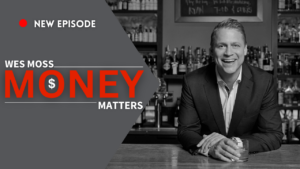If you’ve heard the term “inverted yield curve” floating around the financial world recently and were left scratching your head, you’re not alone. Inverted yield curves sound so much more complicated than they really are, and while news outlets are quick to throw this term around, they seldom explain what the term means, and why they matter to investors.
So, let’s talk about exactly what inverted yield curves are. (Hint: they’re not why Tom Brady was sidelined last year.)
An inverted yield curve is a way of describing an interest rate environment where long-term bond interest payouts are lower than they are for short-term bonds.
Why do we care? Because inverted yield curves have been found to be predictors of recession.
Let’s break it down.
A “yield curve” is a visual description of what bonds should pay at various maturities – they’re what you get if you plot bond yields along a timeline for one, two, five, ten and 30 years and connect the dots.
The line is supposed to slope up, meaning you should get more interest the longer you tie up your money. So, 30-year yields should be higher than ten, ten higher than five, and so on. Typically, we see this trend in corporate bonds, treasury bonds, and even CDs. In a “normal” world, a one-year bond would pay say 1%; a two-year bond would pay 2%, a three-year bond would pay 3%, and so on down the line.
When these values get out of whack, we could head into an inverted yield curve territory.
Consider now that a one-year bond pays 1%, a two-year bond pays 3%, and a three-year bond pays only 2%. This longer-term bond is yielding less than its shorter-term cousin.
This scenario is rare, but it signals that something is not quite right with the economy. This is why we care about inverted yield curves.
Think of it this way: if you could get more interest on a shorter-term bond than one with a longer term, this could mean that bond investors believe we’re going into a recession and rates will, sooner or later, go lower. Hence, the longer-dated bonds paying out less is a reflection of this concern about the future of the economy.
Over time, inverted yield curves have proved a pretty accurate signal of economic trouble. The real indicator comes when we take the ten-year yield and subtract the two-year yield. Normally, this is a positive number, as the ten-year number should be higher than that of the two-year. Imagine 3% for the ten-year and 1% for the two-year. Here, we get positive two. That’s good stuff.
Today, however, the ten-year is at 3%, and the two-year is at 2.25%. Under our formula, we are left with only 0.75 in the positive.
The bottom line is that these rates and the difference between them are worth watching, and we will continue to do so.
For more context on the predictive potential of inverted yield curves, let’s look back at some economic history. Five out of the last five times we’ve gone inverted, or negative in our ten-year minus two-year formula, the US economy has gone into recession. This has happened in an average timespan of between 12 and 18 months.
Consider these data points:
- In 1978 we inverted, and 500 days later we hit the recession of the 1980s.
- In 1988 we inverted, and 550 days later, recession hit.
- In 1999 we inverted, and 400 days later came recession.
- In we 2005 inverted again, and 700 days later we saw another recession.
If we average the number of days from the above, we get a little over 530, or about one-and-a-half years that a recession strikes after the yield curve inverts.
Oh, and by the way, the market usually does well in this interim period, during this time, with stocks rising an average 12% until we enter recession territory.
So, as we’ve illustrated, it’s good to know what inverted yield curves are and why they’re important. Of course, tides ebb and flow, and there is no sure-fire predictor of how the economy will perform in the future. Still, inverted yield curves are like an earthquake in the ocean – the tsunami may not happen right away, but you’ll likely feel it coming.








